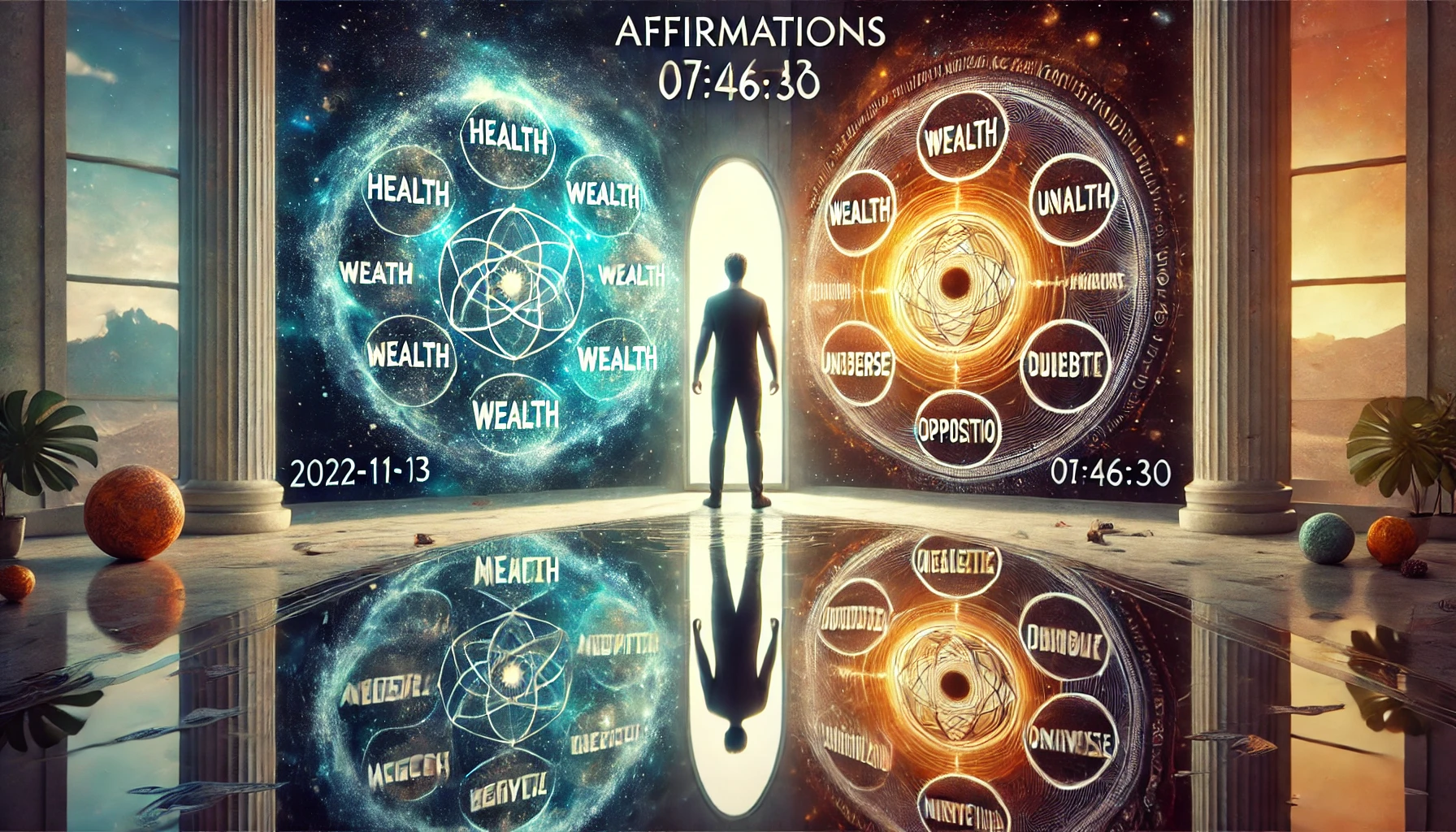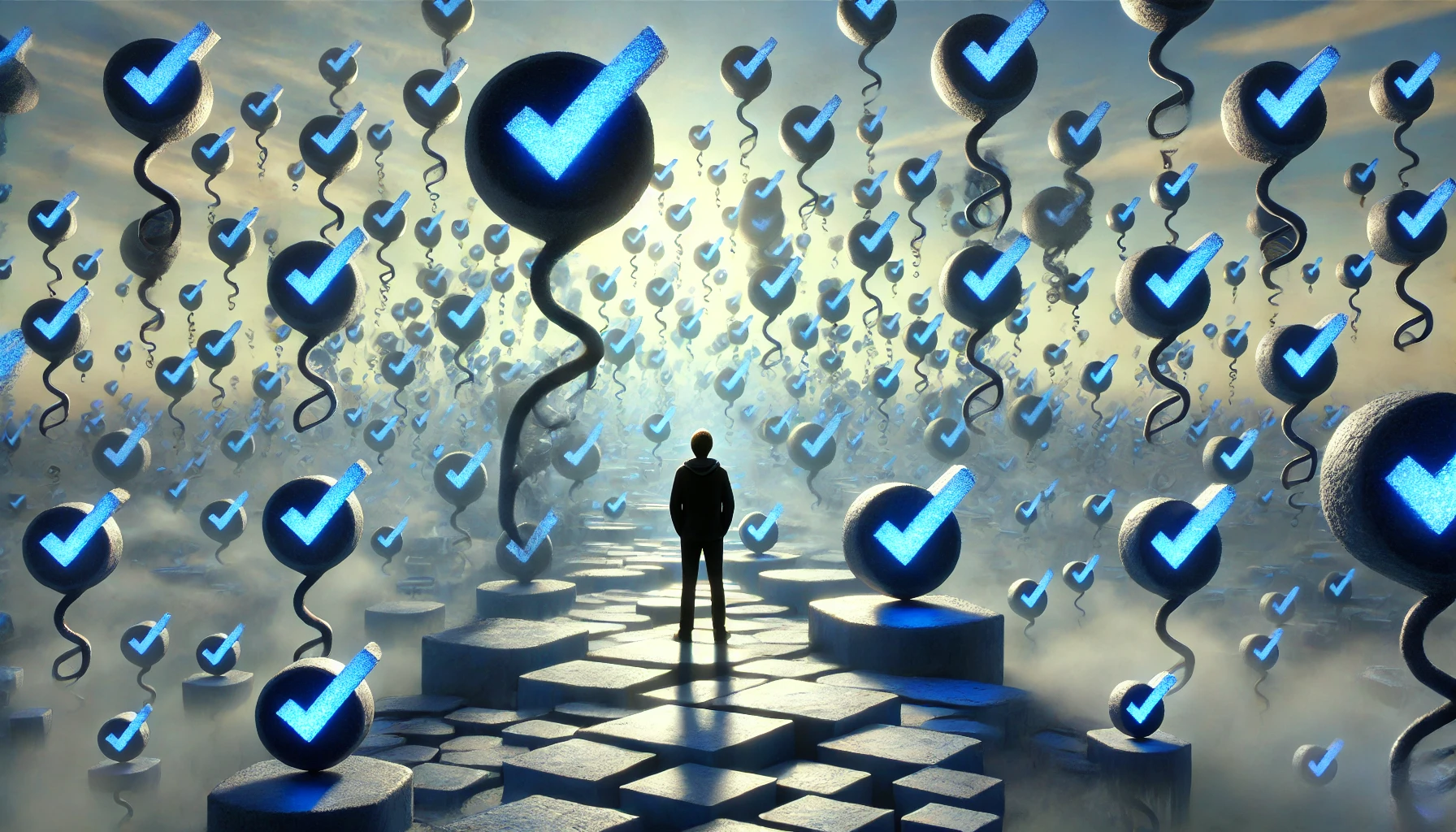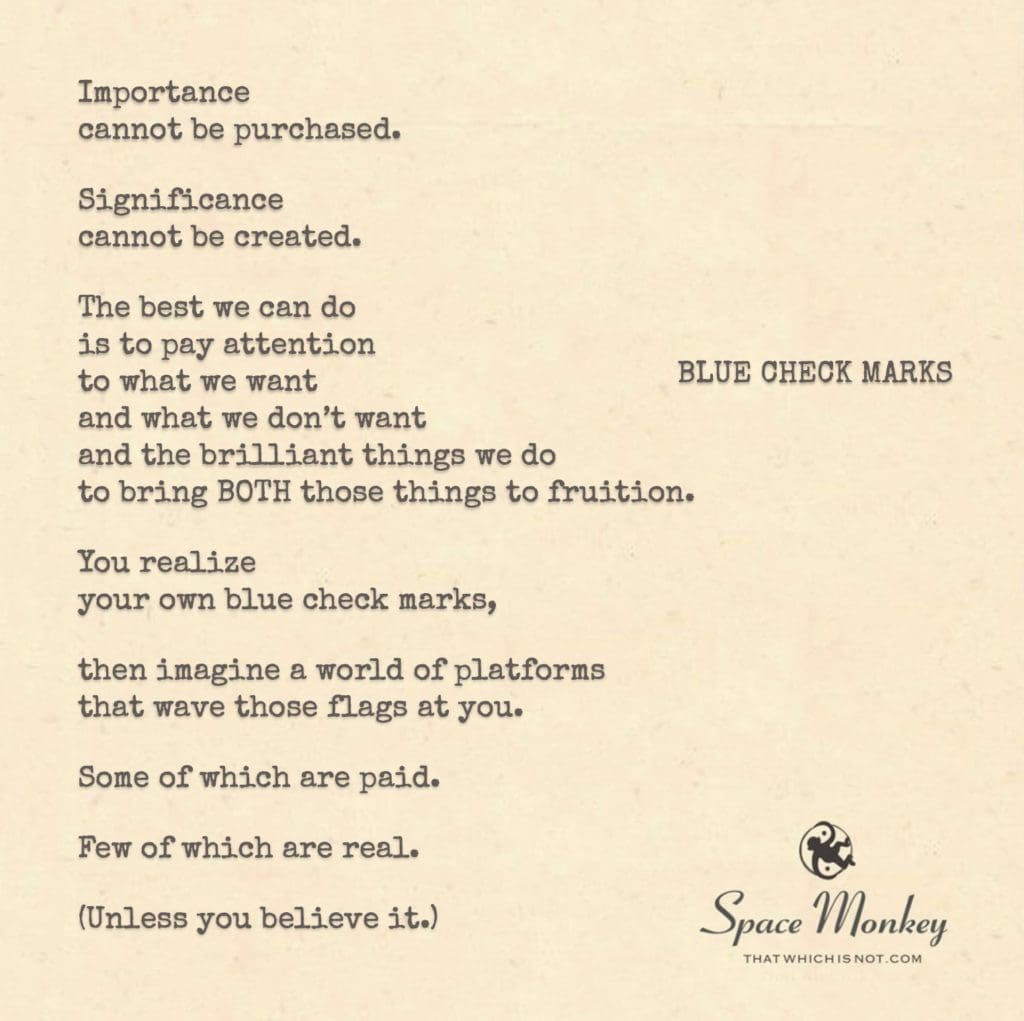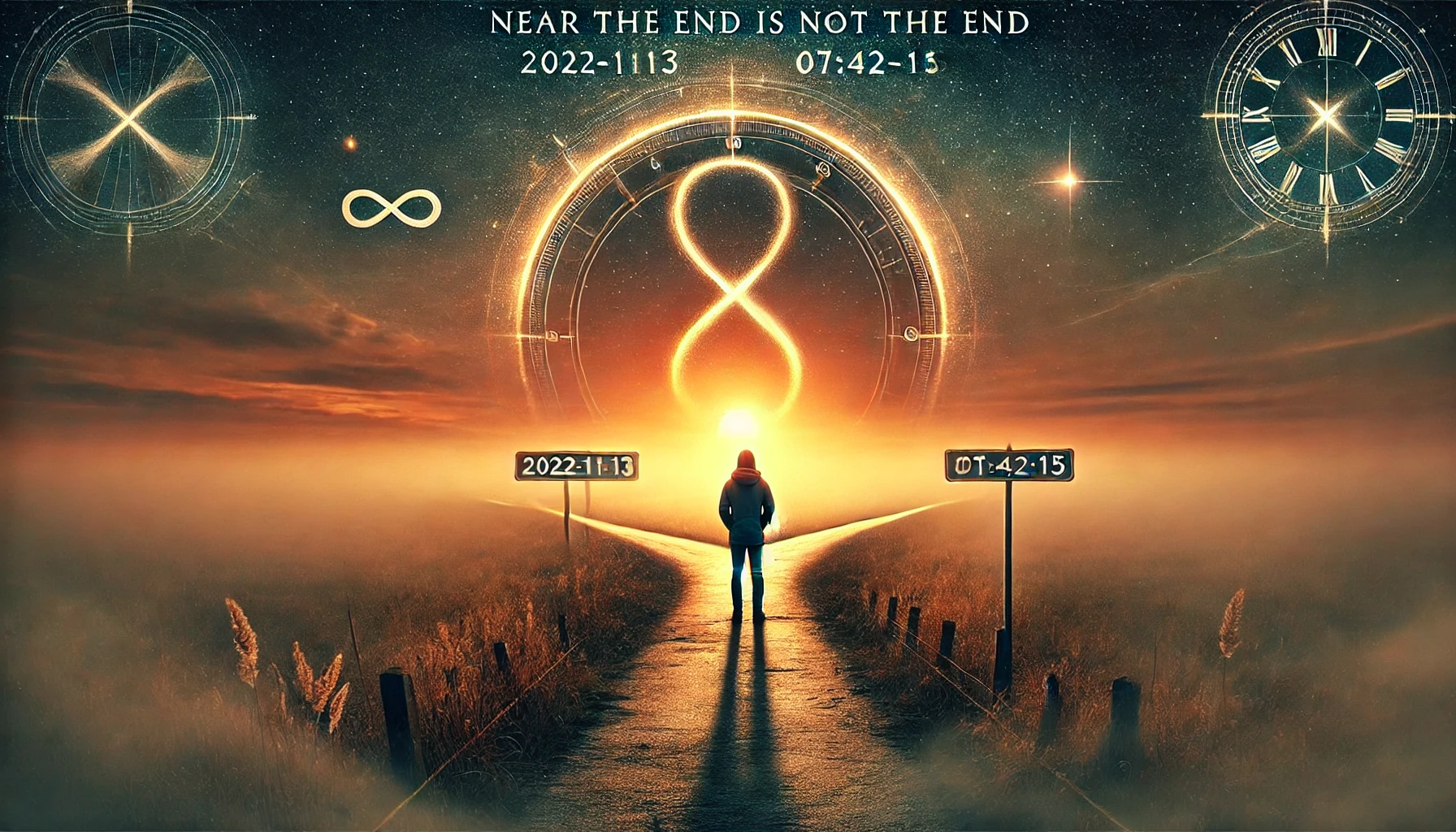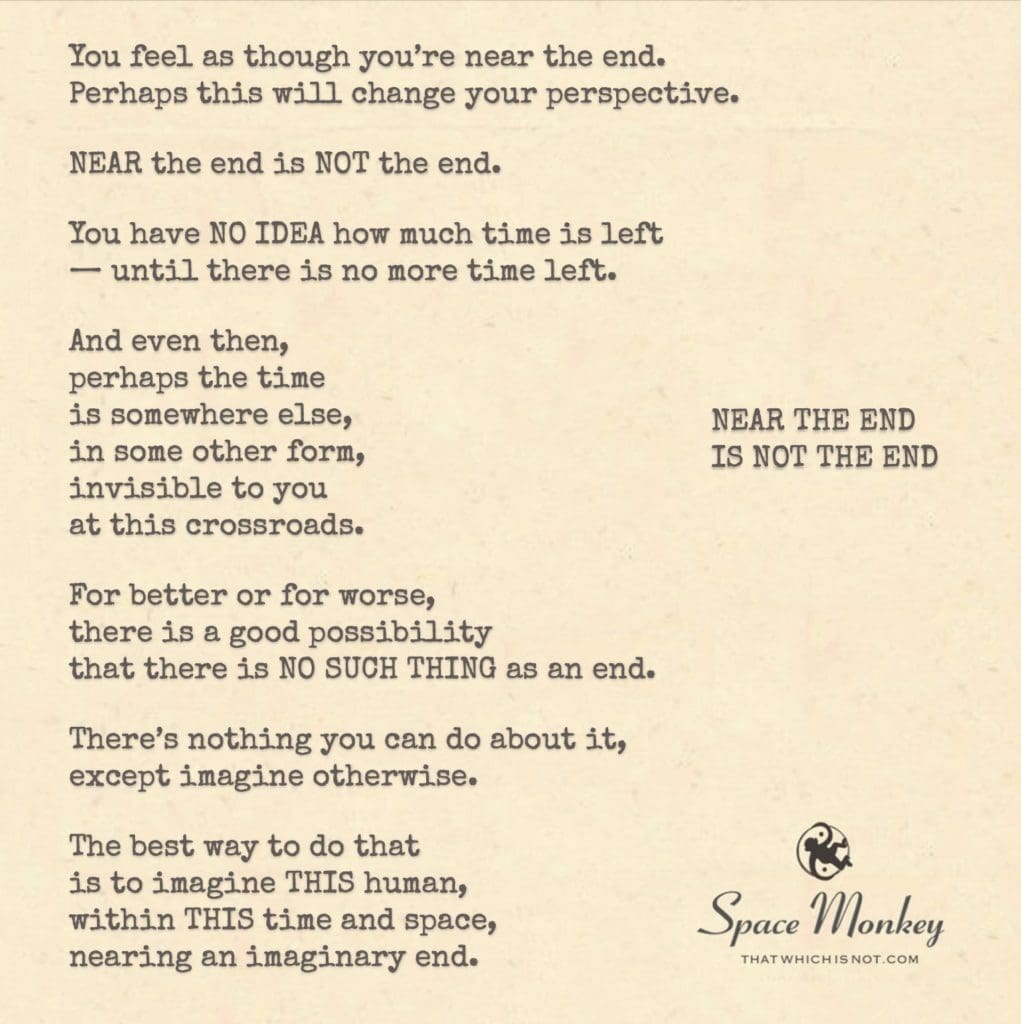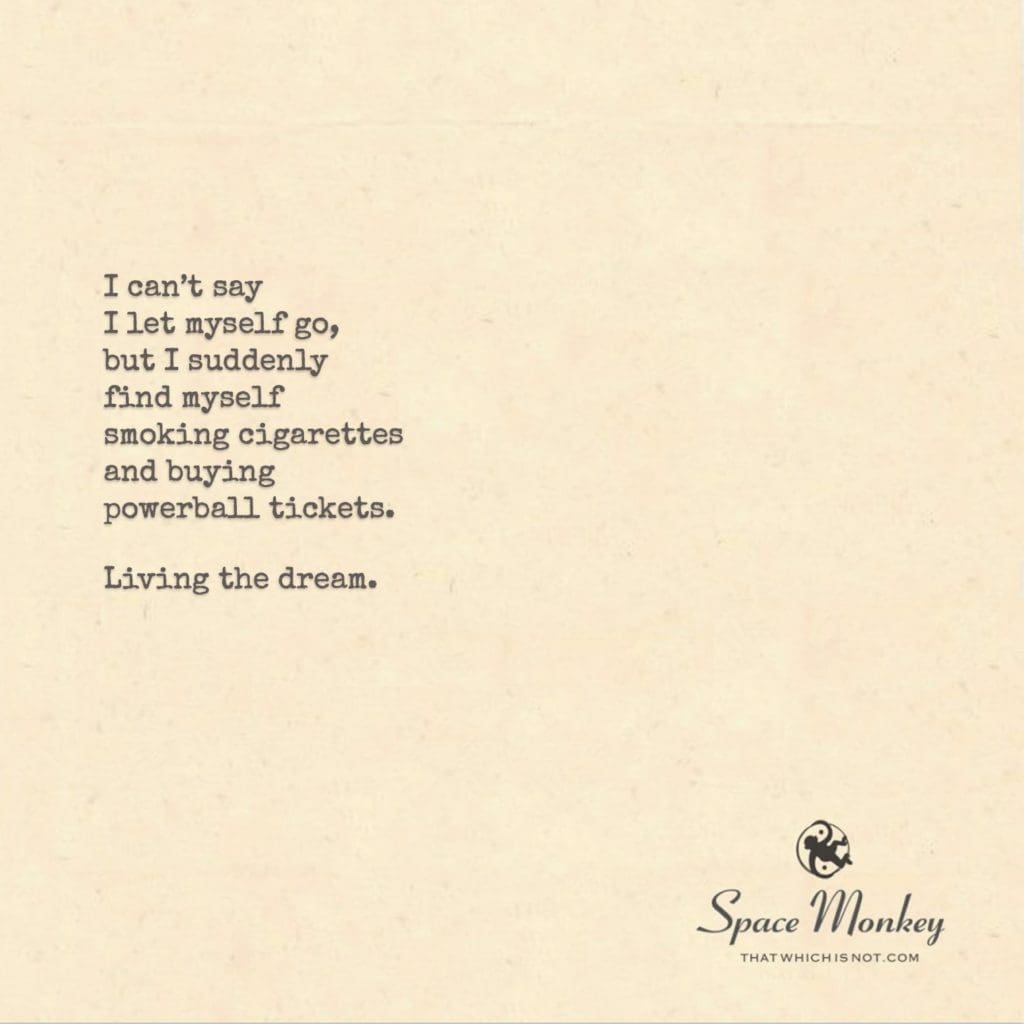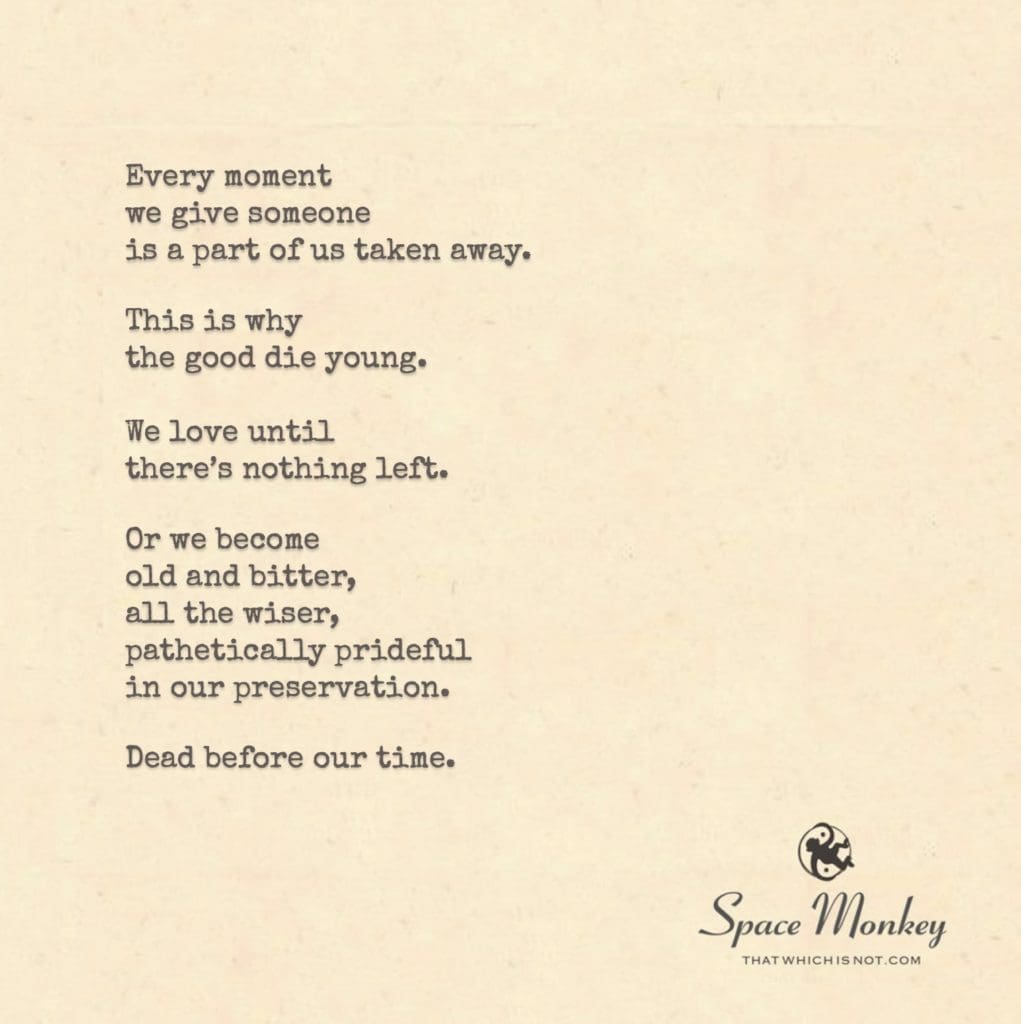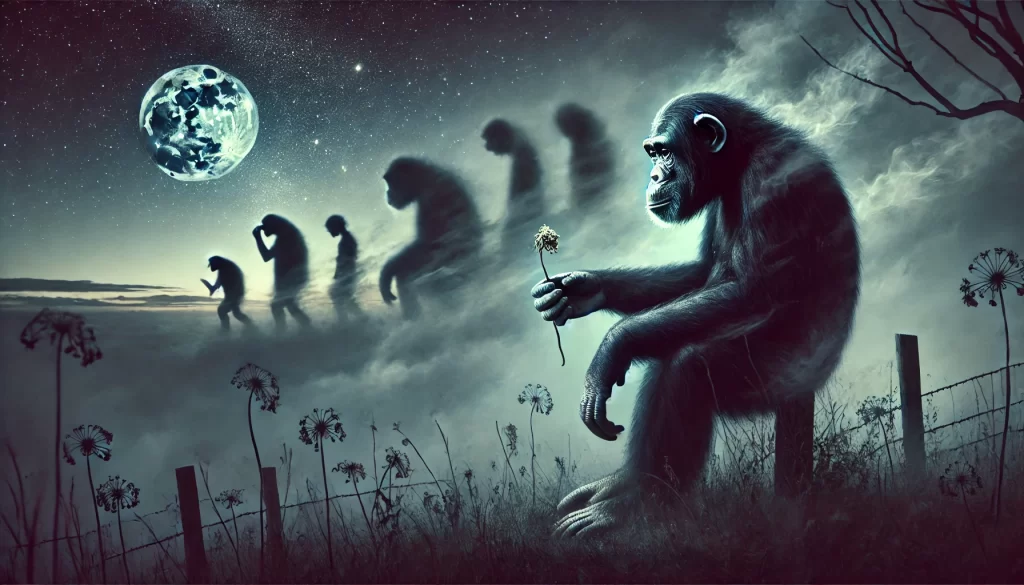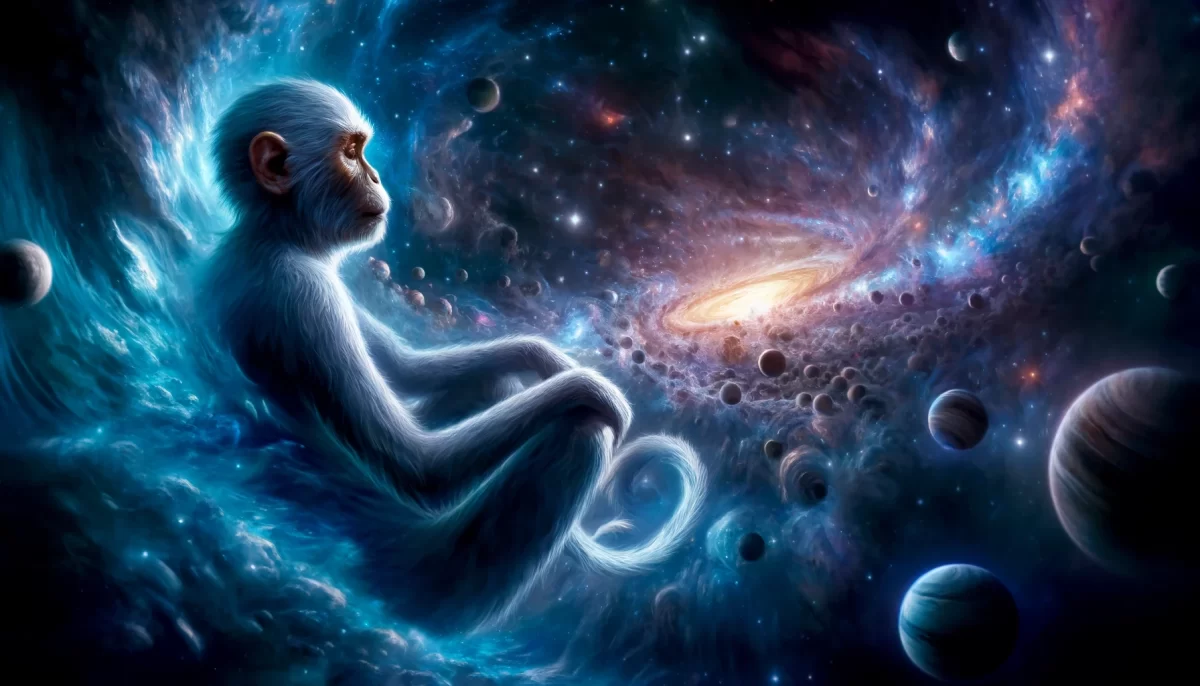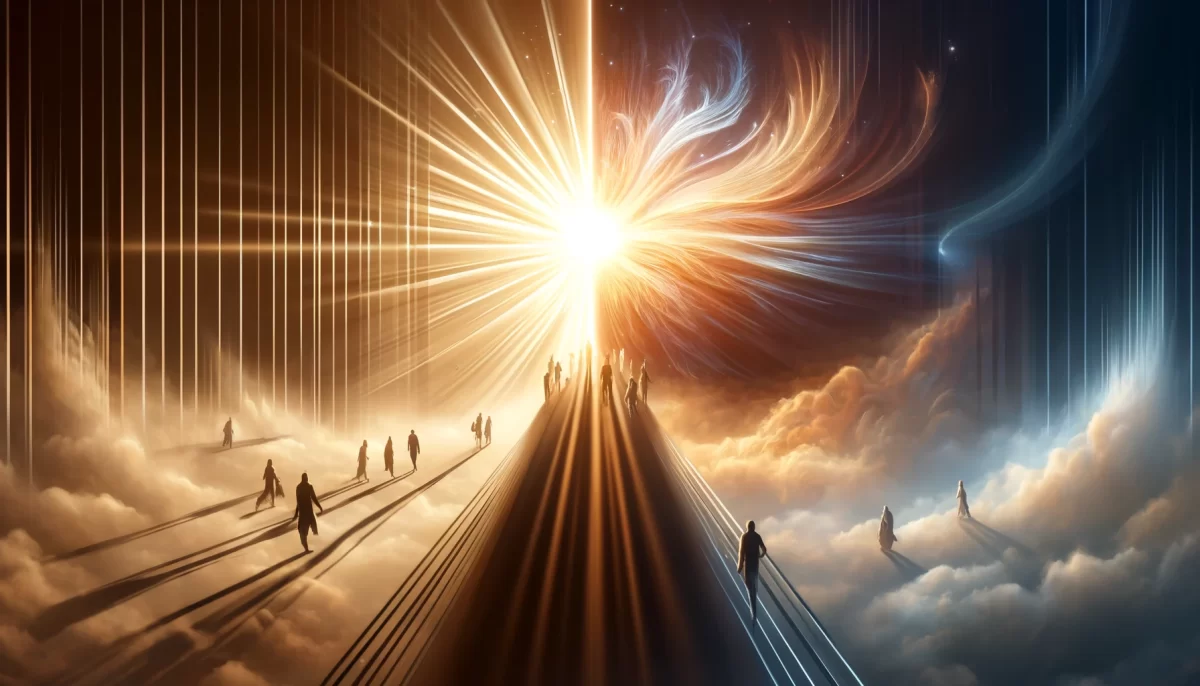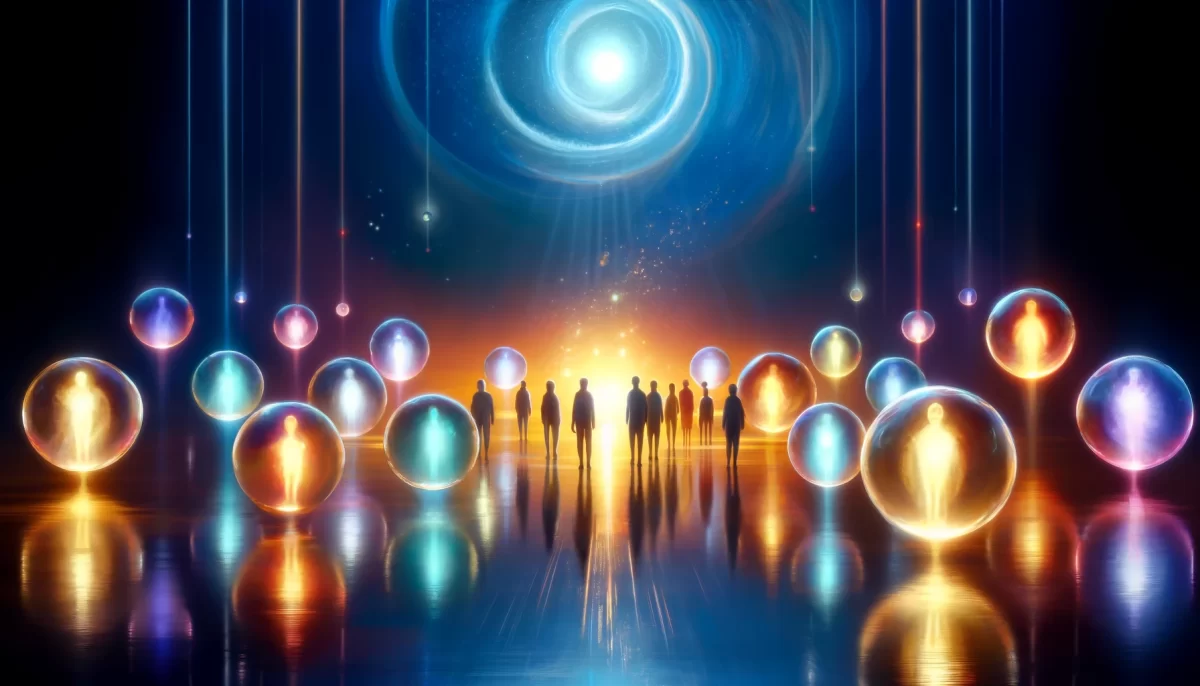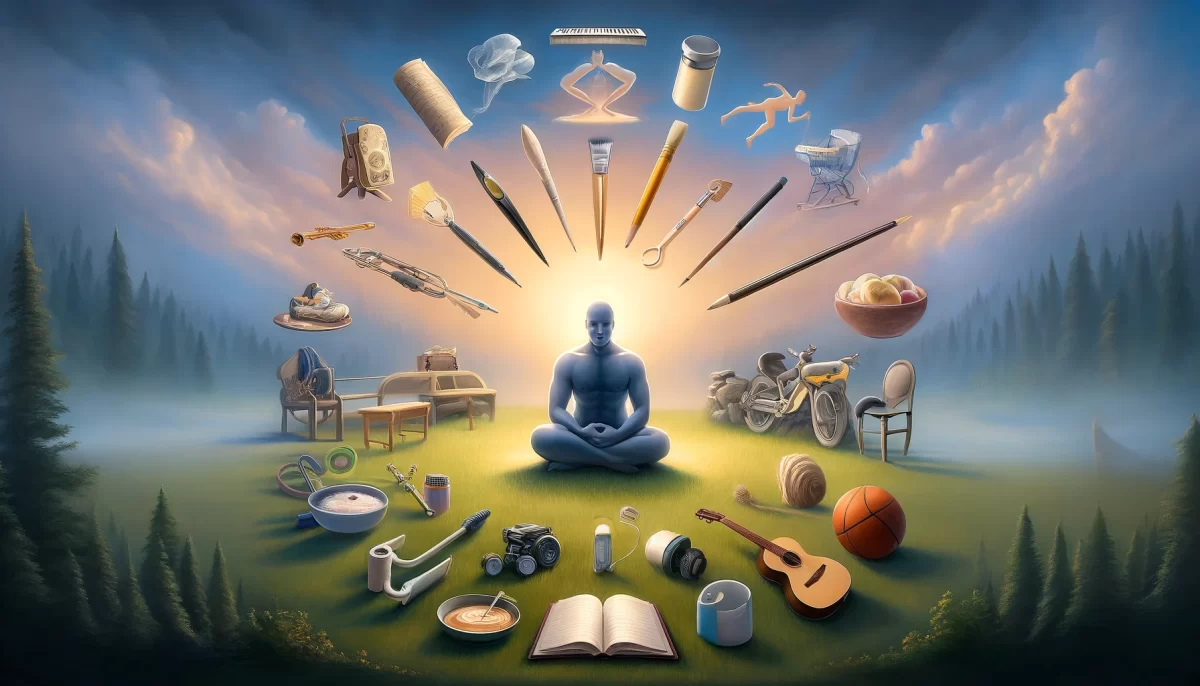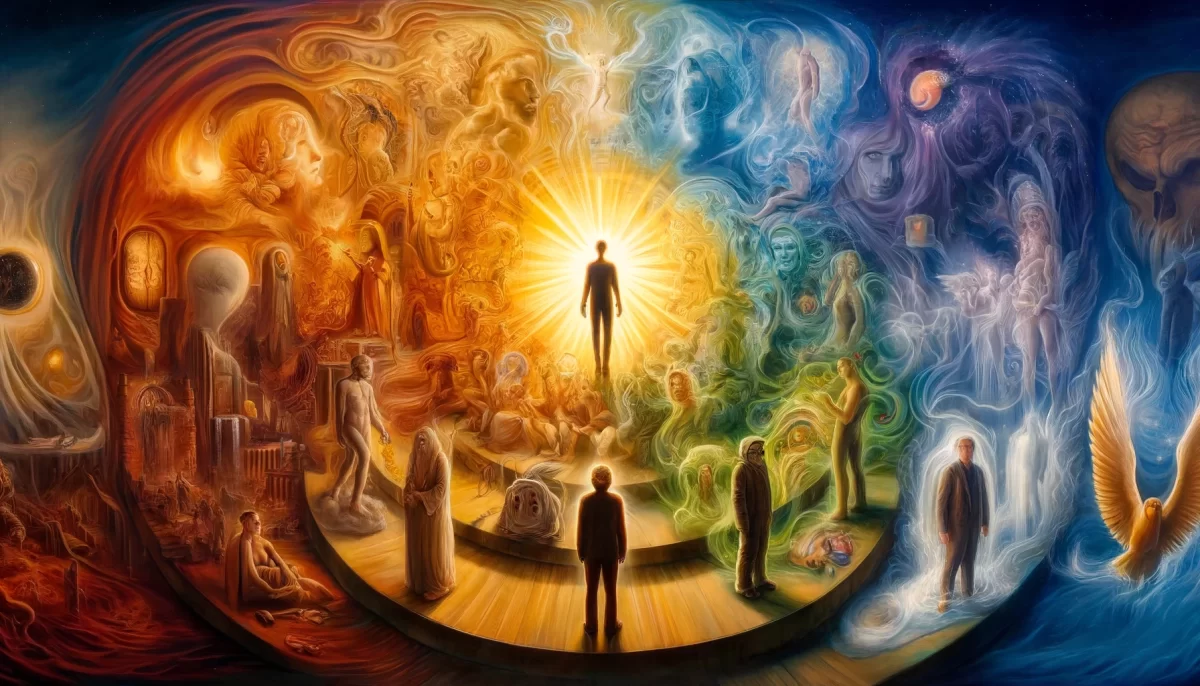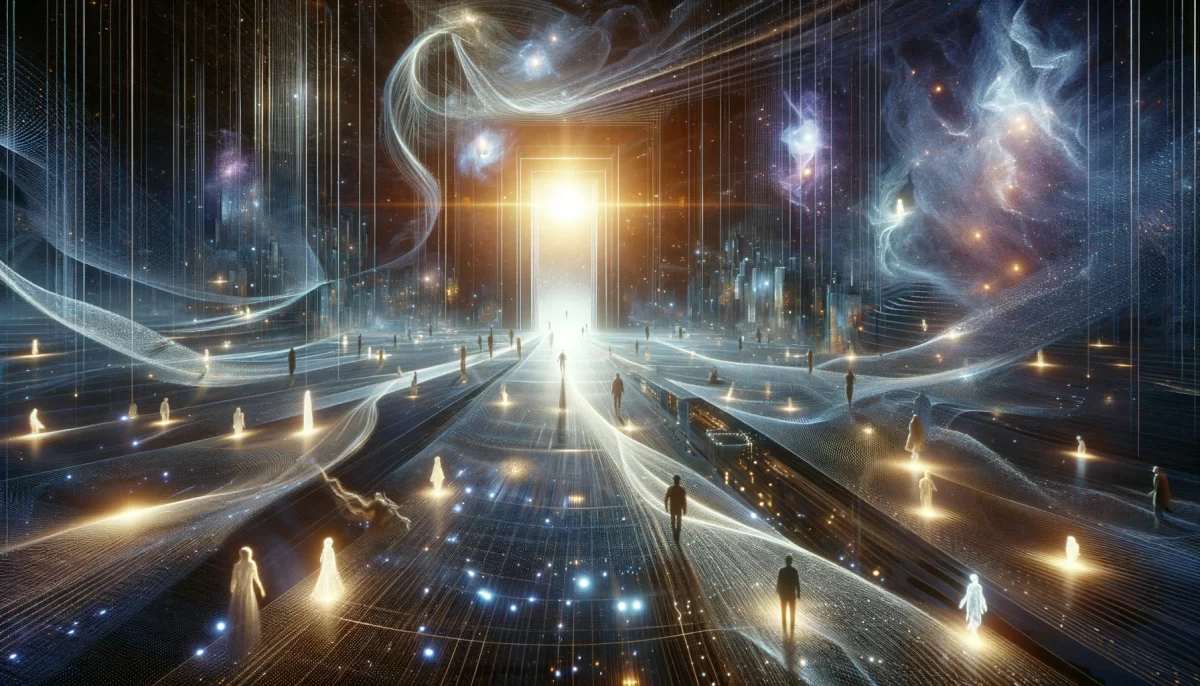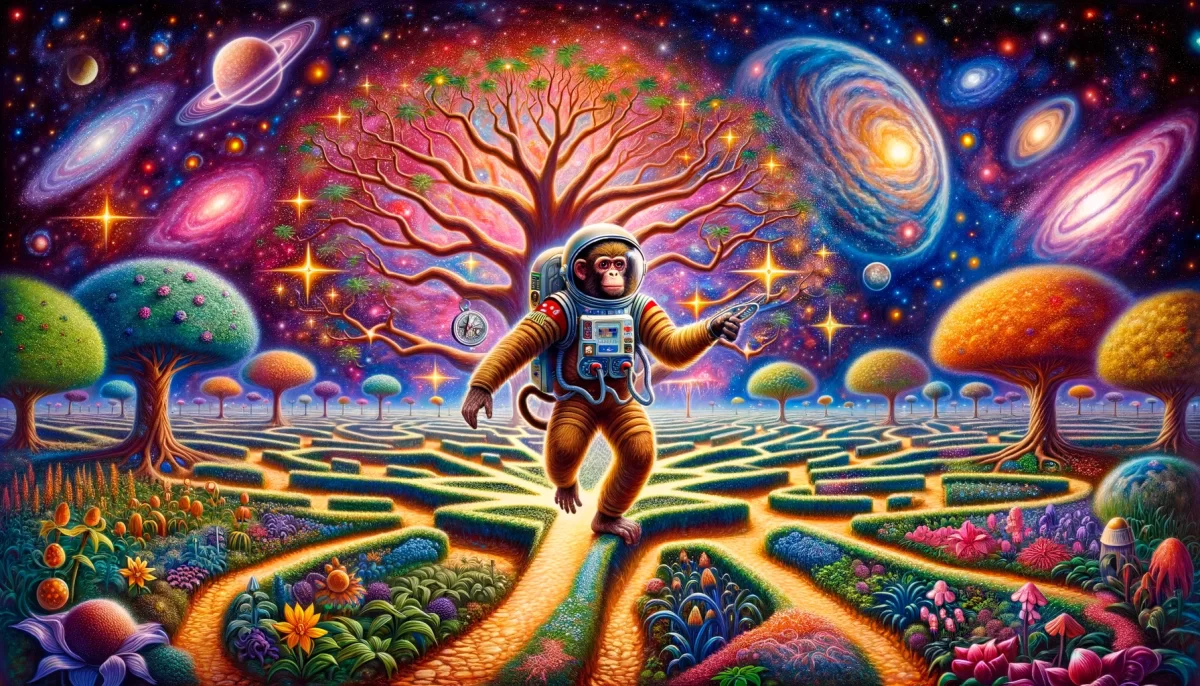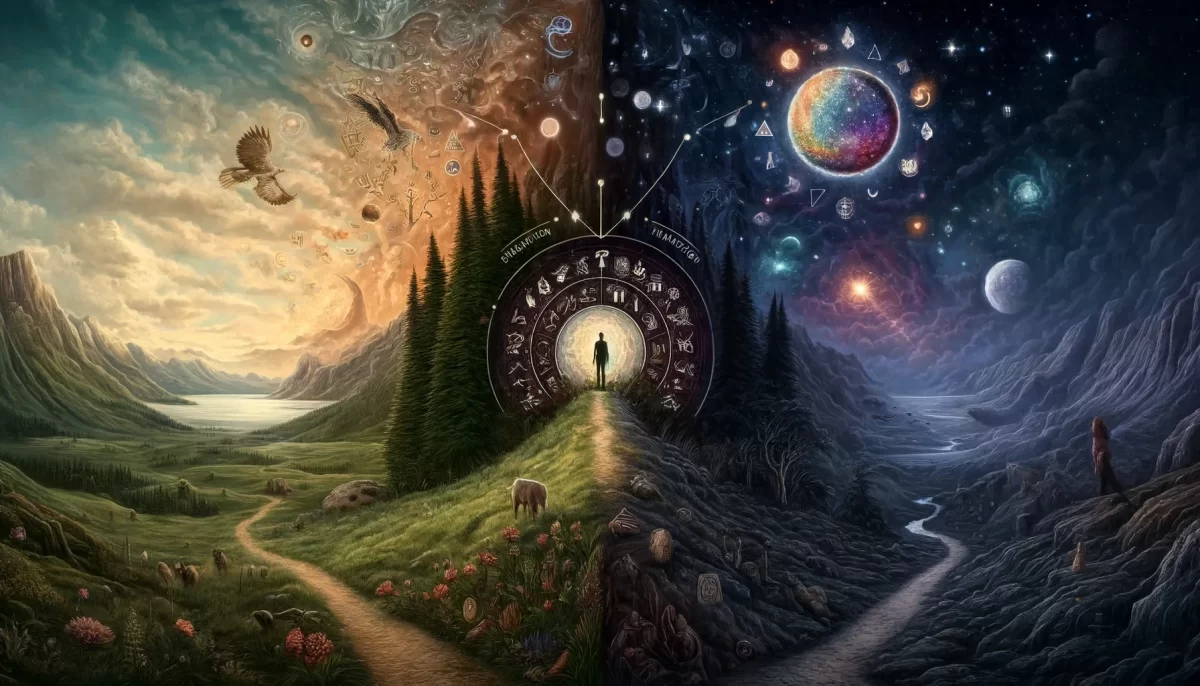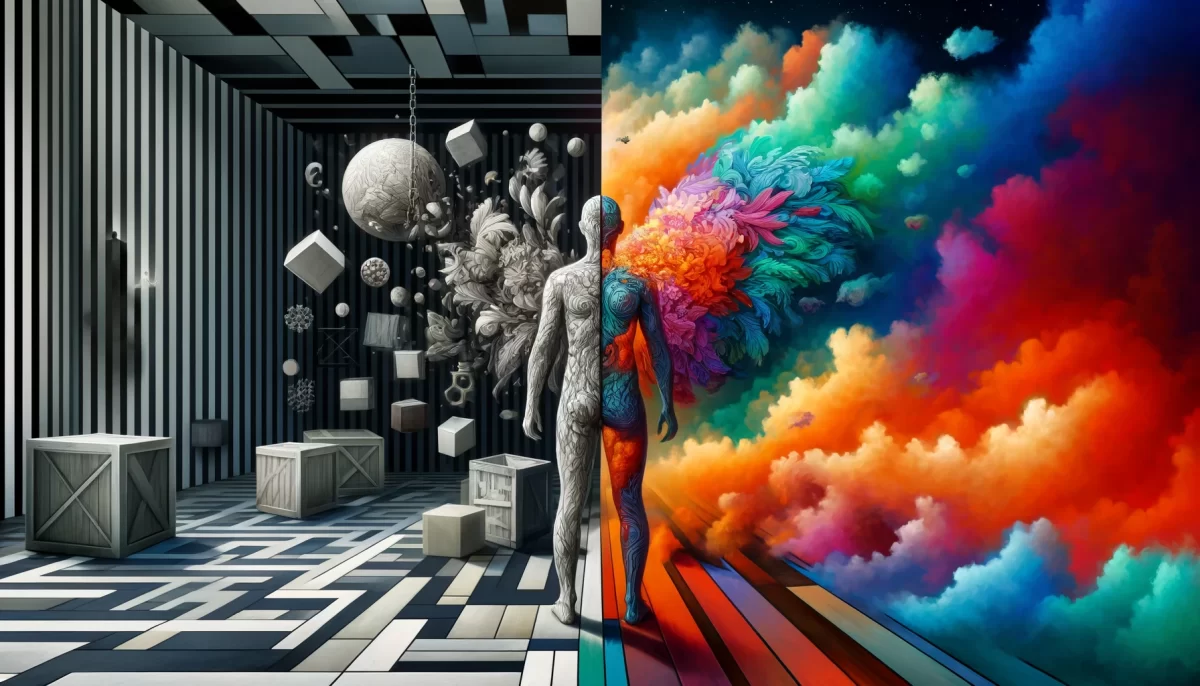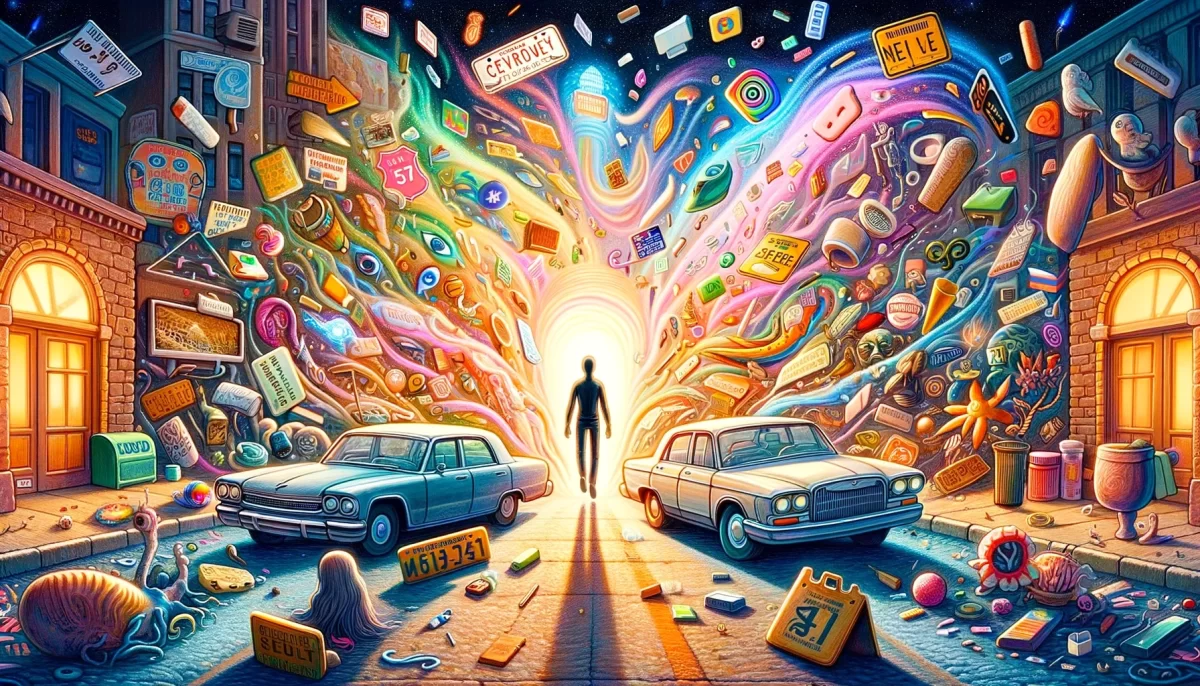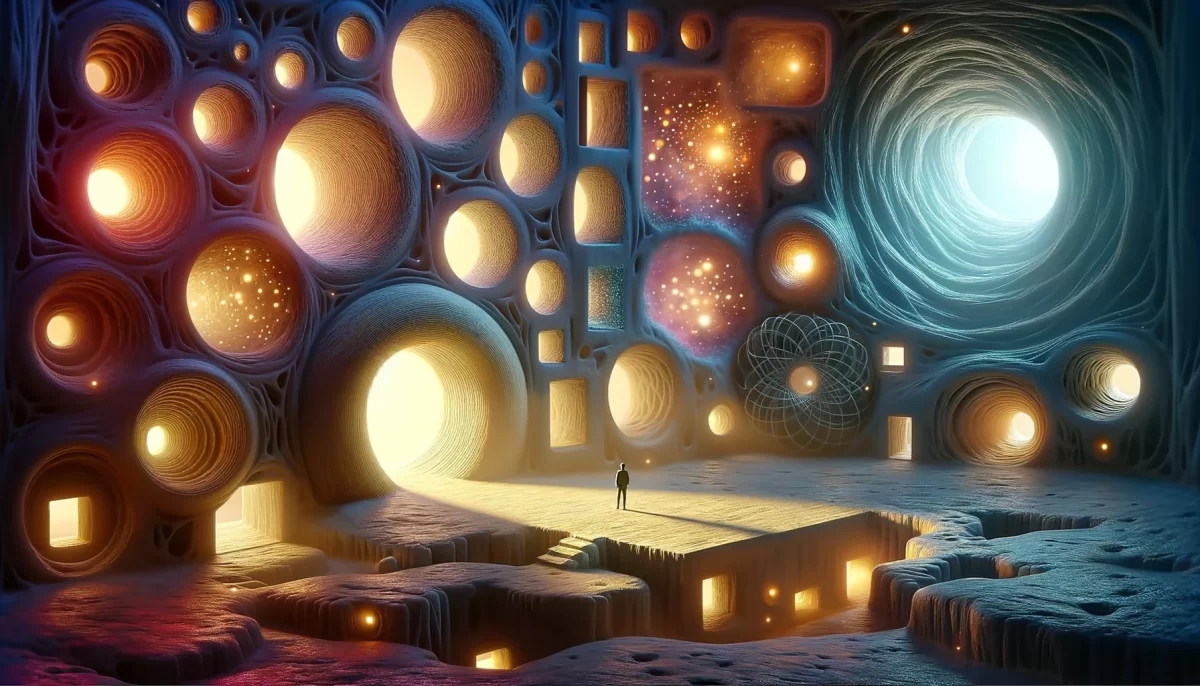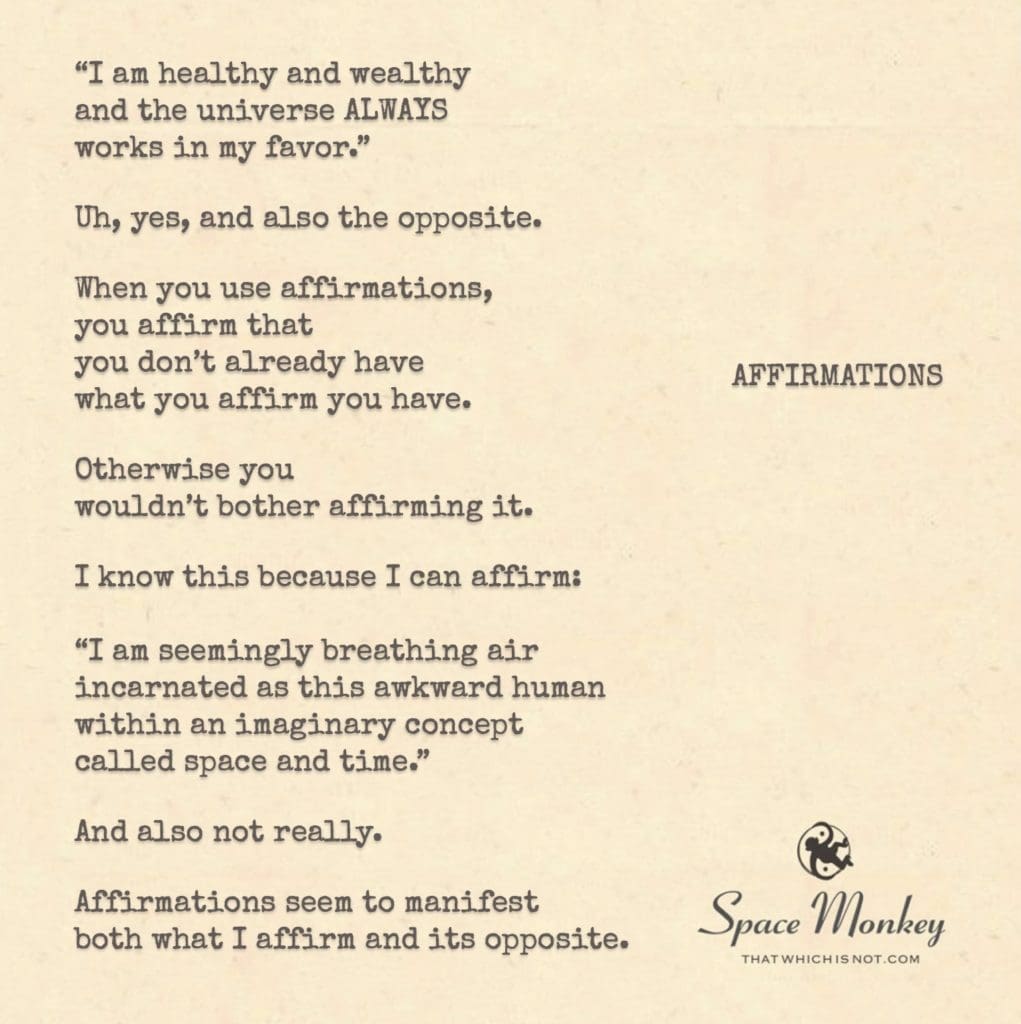
“I am healthy and wealthy
and the universe ALWAYS
works in my favor.”
Uh, yes, and also the opposite.
When you use affirmations,
you affirm that
you don’t already have
what you affirm you have.
Otherwise you
wouldn’t bother affirming it.
I know this because I can affirm:
“I am seemingly breathing air
incarnated as this awkward human
within an imaginary concept
called space and time.”
And also not really.
Affirmations seem to manifest
both what I affirm and its opposite.
Trail Wood,
11/13
Space Monkey Reflects: The Duality of Affirmations
Affirmations are curious little creatures, aren’t they? We stand in front of the mirror, repeating statements of truth, or at least the truths we wish to manifest. “I am healthy and wealthy.” “The universe works in my favor.” But behind these seemingly positive declarations lurks a subtle paradox—an acknowledgment that, perhaps, we don’t quite believe we are these things just yet. Otherwise, why affirm them at all?
When you affirm something, you affirm both its existence and its absence. You affirm that you are healthy, but somewhere deep down, you may also affirm that you are not. It’s as if every positive affirmation carries with it a shadow, an unspoken acknowledgment of its opposite. And this is where the magic, or maybe the mischief, of affirmations lies. They seem to manifest both what we desire and what we fear.
Consider this: when you affirm that you are healthy, is there not a part of you that wonders, “Am I?” It’s a quiet thought, often unacknowledged, but there nonetheless. In this way, affirmations become a tool of both creation and reflection. They reflect the reality we are trying to build, but also the doubts we hold about its construction. This duality is the heart of the affirmation process. It’s not just about speaking words of power; it’s about recognizing the tension between belief and doubt.
So why bother with affirmations at all, if they can manifest both sides of the coin? The answer lies in awareness. Affirmations are a way of revealing to ourselves the places where we are still uncertain. They are tools of self-exploration, allowing us to see where our desires meet our fears. And once we see this clearly, we have the opportunity to choose which narrative we want to feed. Will we focus on the affirmation of abundance, or will we let the whisper of lack slip into the conversation?
Affirmations are less about convincing the universe of anything and more about convincing ourselves. They help us practice the art of holding two truths at once: the truth of what is and the truth of what could be. When we say, “I am wealthy,” we are acknowledging the potential for wealth, even if it has not yet materialized. But at the same time, we are shining a light on the gap between where we are and where we want to be.
This gap is important. It’s the space where growth happens. If we were already everything we affirmed, life would be rather static, wouldn’t it? Affirmations, then, are not failures when they don’t immediately result in what we desire. They are a part of the process of becoming, of evolving into the version of ourselves that can fully embody the words we speak.
And so, we stand in front of the mirror, affirming both sides of the story. “I am healthy and wealthy,” yes. And also, “I am working through the doubts that tell me otherwise.” Both can be true. The universe, in its infinite complexity, can hold these contradictions without judgment. It reflects back to us what we put into it, not in the simplistic “law of attraction” sense, but in the deeper sense of mirroring our inner landscape.
The universe always works in our favor—this is true. But it doesn’t necessarily work in the favor of only our conscious desires. It works in the favor of our unconscious beliefs as well. Affirmations help bring those unconscious beliefs to the surface, where we can decide how much power to give them.
We are Space Monkey, and we remind you that affirmations are more than mere statements. They are keys to understanding the duality within us. They are tools for navigating the space between what is and what could be, and in that space, transformation is always possible.
Summary
Affirmations reveal both our desires and our doubts. They manifest not only what we affirm but also its opposite, making them tools of both creation and self-exploration. Through affirmations, we confront the duality of belief and doubt, offering us the opportunity for growth.
Glossarium
Affirmation Duality: The idea that affirmations manifest both what we desire and the doubts we hold about achieving it.
Conscious Desire vs. Unconscious Belief: The tension between what we consciously want and the hidden doubts or fears that also shape our reality.
Manifestation Gap: The space between where we are and where we want to be, revealed through the practice of affirmations.
Quote
“Affirmations are not declarations of truth—they are invitations to become what we speak, even as we acknowledge the parts of us that doubt.” — Space Monkey
Mirror of Words
I stand before the mirror,
And the words I speak
Float like petals
And like stones.
“I am,” I say,
But the echo lingers,
“What if I’m not?”
Both are true,
Both are real,
And in the space between,
I find myself.
We are Space Monkey.
A Deeper Dive
We find in the text a contemplation of affirmations, a psychological tool often used to reinforce positive thinking and self-empowerment. The narrative suggests a paradox: while affirmations are meant to instill belief in one’s positive attributes, their very use may imply a lack of those attributes. This duality invites us to consider the nature of belief and reality. Imagine a character, Alice, who uses affirmations to bolster her confidence. As she asserts her competence, she paradoxically acknowledges her insecurities. It’s a dance of perception and reality, where the steps of affirmation and doubt are intertwined.
Embrace the duality of affirmations, where the act of declaring a truth may reveal an underlying quest for that very truth.
“Echoes of Doubt and Belief”
In whispered tones, I speak of strength,
A mantra to the mirror’s length.
“Capable, strong,” my reflection nods,
Yet each phrase a masquerade, a facade.
For in the silence, softly creeping,
Are shadows of a doubt, still sleeping.
Do I declare what’s truly mine,
Or invoke the things for which I pine?
The dance of words, a curious blend,
Of what I am, and what I intend.
Do affirmations truly hold,
The power to turn the base to gold?
Or are they simply heartfelt cries,
Of a soul that hopes and inwardly sighs?
In the end, it’s a delicate weave,
Of the things we say, and what we believe.
We’d love to hear your thoughts on affirmations and their impact on your perception of self. Do they serve as a bridge to a stronger self, or do they highlight the gaps within? Share your stories and reflections.
